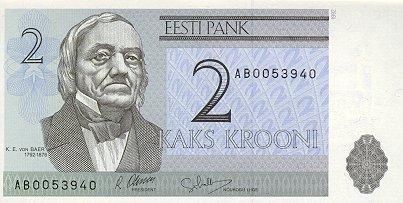אסטוניה – Estonia
אסטוניה 


The Republic of Estonia did not have its own currency in 1918. Currency circulation was legislatively regulated by the order of the German occupying powers of 15 September 1918 declaring that the German mark (equal to the so-called ostmark) was the only .In 1928, the first coins of this currency were issued, nickel-bronze 25 senti pieces. These were followed by bronze 1 sent in 1929, silver 2 krooni in 1930, bronze 5 senti and nickel-bronze 10 senti in 1931, silver 1 kroon in 1933, bronze 2 senti and aluminium-bronze 1 kroon in 1934, nickel-bronze 20 senti in 1935, nickel-bronze 50 senti in 1936.
On 25 July 1940, 4 days after the founding of the Estonian SSR, the last Estonian pre-WW II coin, the new 1 sent (date 1939), was issued.1 January 2007; however, it did not formally apply when Slovenia did, and officially changed its target date to 1 January 2008, and later, to 1 January 2011.[1]
1 January 2011. On the same date of 13 July 2010, the exchange rate at which the kroon would be exchanged for the euro was also announced. On 20 July 2010, mass production of Estonian













_donated_f.jpg)
_donated_b.jpg)





